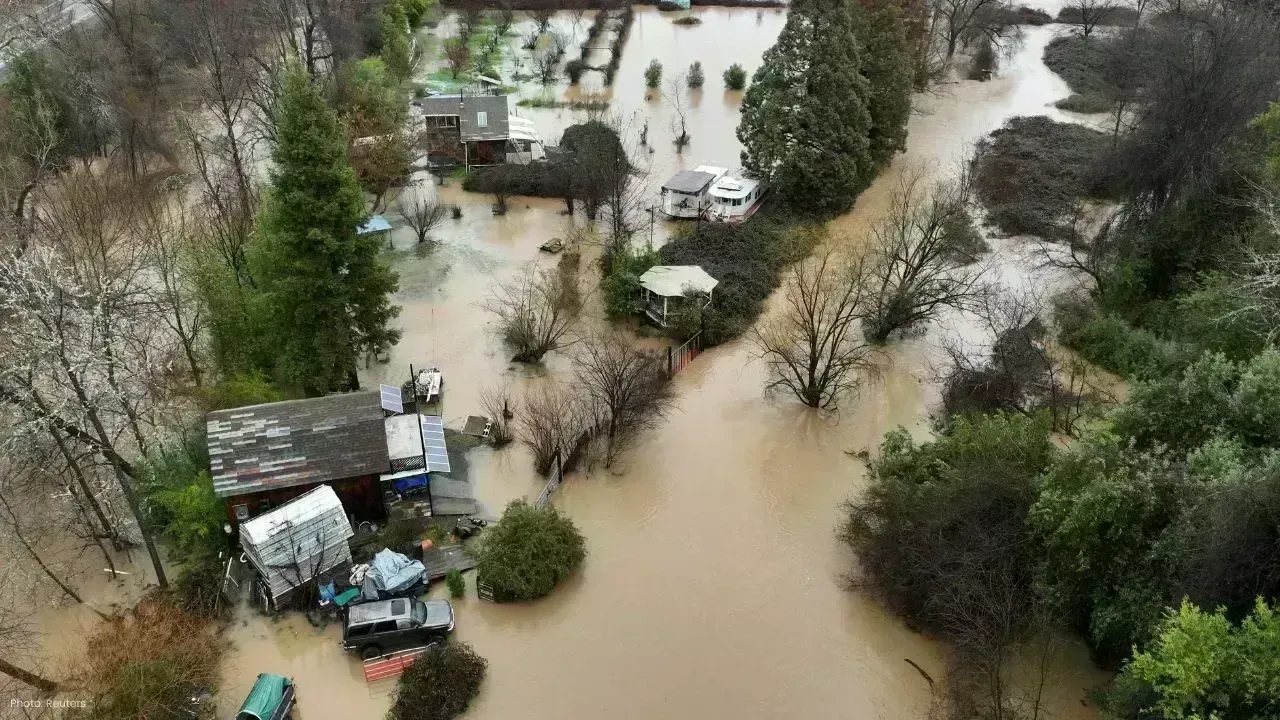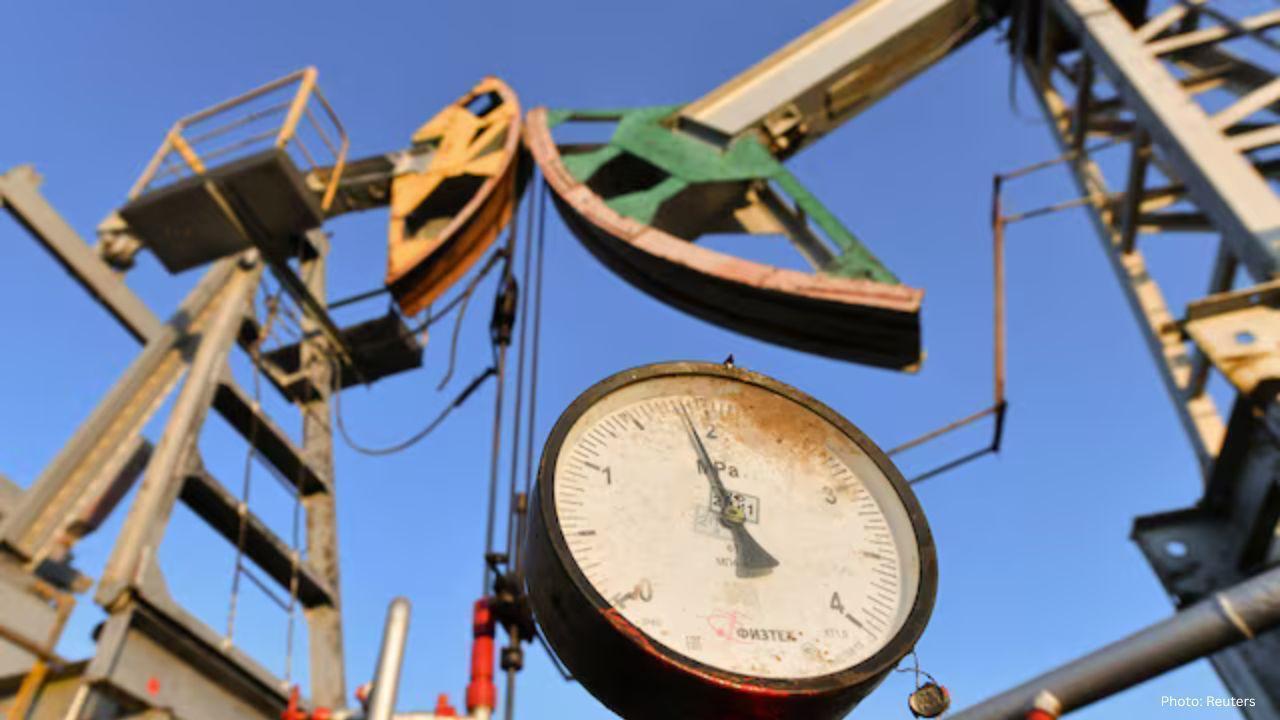You have not yet added any article to your bookmarks!

Join 10k+ people to get notified about new posts, news and tips.
Do not worry we don't spam!

Post by : Anis Farhan
While climate change dominates global discourse, a quieter, more insidious crisis unfolds beneath the ocean’s surface — ocean acidification. As the seas absorb unprecedented levels of carbon dioxide from the atmosphere, their chemistry is shifting at an alarming rate. The water is becoming more acidic, destabilizing delicate marine ecosystems that billions of people rely on for food, income, and environmental balance.
Unlike storms or rising sea levels, ocean acidification doesn’t grab immediate attention because it’s invisible. Yet, its long-term consequences may prove equally devastating, reshaping the future of marine life, global fisheries, and the human communities that depend on them.
Ocean acidification occurs when seawater absorbs carbon dioxide (CO₂) from the atmosphere. When CO₂ dissolves in water, it forms carbonic acid, which lowers the ocean’s pH level. Historically, the oceans have helped regulate Earth’s climate by absorbing about 30% of the CO₂ produced by human activities. However, this natural buffering system is now under stress.
The industrial revolution marked the beginning of a sharp rise in CO₂ emissions. Over the past century, ocean acidity has increased by nearly 30% — a rate unprecedented in millions of years. Marine organisms, particularly those with calcium carbonate shells or skeletons, such as corals, clams, oysters, and plankton, are finding it increasingly difficult to survive in this changing chemistry.
The ocean’s pH has fallen from about 8.2 to 8.1 since the pre-industrial era — a seemingly small change that represents a massive chemical shift. Scientists warn that if emissions continue unchecked, acidity could increase by another 150% by 2100, severely altering marine biodiversity.
The first victims of acidification are species that rely on calcium carbonate to build their shells and skeletons. Mollusks like oysters and mussels, and microscopic plankton — the foundation of the marine food web — are finding it harder to form and maintain their shells.
Coral reefs, often referred to as the “rainforests of the sea,” are particularly at risk. Acidic waters weaken coral skeletons, making them brittle and more susceptible to bleaching and disease. The destruction of coral reefs would mean the collapse of entire ecosystems that host 25% of all marine species.
Fish populations are also being affected. Studies indicate that acidification can impair sensory abilities in fish, making them less able to detect predators or navigate their surroundings. The loss of plankton, the base of the marine food chain, could ripple upward, leading to reduced fish stocks and altered marine biodiversity.
Fisheries around the world are already under strain from overfishing, pollution, and climate change. Acidification adds yet another layer of pressure. Coastal communities, especially in developing countries, are at risk of losing their primary source of protein and livelihood.
The global fishing industry, valued at more than $400 billion annually, depends on the delicate balance of marine ecosystems. If shellfish and plankton populations decline, the entire food web could collapse, leading to a dramatic reduction in fish availability.
In the U.S., Pacific Northwest oyster farmers have already experienced massive losses due to acidic waters affecting larvae survival. Similarly, in parts of Asia and Africa, local fishermen report declining catches and smaller fish sizes — both linked to environmental stressors.
Ocean acidification doesn’t just threaten marine life; it threatens global food security. Roughly 3 billion people rely on seafood as their primary source of animal protein. The loss of fish populations could worsen hunger and malnutrition in vulnerable regions, particularly in coastal and island nations.
Moreover, the decline of keystone species like plankton would disrupt not only fisheries but also the global carbon cycle. Plankton absorb significant amounts of CO₂, and their decline means less carbon is stored in the deep ocean, exacerbating climate change.
The chain reaction is alarming — less plankton means fewer small fish, which affects larger predators like tuna, sharks, and marine mammals. This imbalance could lead to widespread biodiversity loss, disrupting marine ecosystems for centuries.
Ocean acidification doesn’t act in isolation. It works in tandem with rising ocean temperatures, pollution, and deoxygenation to create a hostile environment for marine life. Warmer waters exacerbate the effects of acidity, reducing the ocean’s ability to absorb CO₂ and stressing already vulnerable ecosystems.
The melting of polar ice adds further complexity. As freshwater dilutes seawater, it alters salinity and chemistry, affecting marine species’ adaptability. Together, these changes could create feedback loops that accelerate global warming and biodiversity loss.
In essence, acidification and climate change are two sides of the same coin — both driven by carbon emissions and both demanding urgent global action.
Some regions are experiencing acidification faster than others. The Arctic Ocean, for example, is particularly vulnerable due to cold waters that absorb more CO₂. Similarly, the Pacific Ocean along North America’s coast and parts of the Indian Ocean are witnessing alarming chemical changes.
These regional differences mean that some communities are already feeling the impacts, while others may face them in the coming decades. Nations with large fishing industries — such as Indonesia, Japan, and Norway — could see major disruptions to their economies if current trends continue.
Scientists and innovators are exploring solutions to slow and mitigate ocean acidification. Efforts include developing resilient coral species, restoring mangroves and seagrasses that absorb CO₂, and experimenting with ocean alkalinity enhancement — adding minerals to seawater to neutralize acidity.
Marine protected areas (MPAs) are also being expanded to safeguard vulnerable ecosystems. These zones help marine populations recover by reducing other stressors such as overfishing and pollution.
At the policy level, the Paris Agreement indirectly addresses ocean acidification by targeting CO₂ reduction. However, many experts believe that more direct global frameworks are needed to monitor and manage the ocean’s changing chemistry.
The human cost of ocean acidification cannot be ignored. Millions of people in coastal regions depend on the ocean for their food, jobs, and cultural identity. As marine resources decline, poverty and migration could rise. Small island nations, already threatened by rising seas, face a compounded crisis as their fisheries dwindle.
Tourism industries that depend on coral reefs, such as in the Maldives, Australia, and the Caribbean, are also at risk. A dying reef not only harms biodiversity but also eliminates natural protection against storm surges and coastal erosion.
This environmental injustice highlights how those who contribute least to global emissions — small-scale fishermen, indigenous coastal communities — are among the first to bear the brunt of the crisis.
Ocean acidification represents one of the most urgent yet underreported environmental challenges of our time. If humanity fails to curb carbon emissions, the oceans could reach tipping points that are irreversible for millennia.
The solution lies in collective global action — reducing emissions, protecting marine ecosystems, investing in sustainable fisheries, and fostering innovation. Every effort to cut CO₂ matters, every marine restoration project counts.
The ocean has long been Earth’s life support system. Preserving its chemistry is not merely an environmental obligation — it’s a fight for the planet’s survival and humanity’s future.
This article is intended for informational purposes only. It highlights scientific findings and environmental observations about ocean acidification and its effects on marine ecosystems. Readers are encouraged to follow updates from global environmental agencies and marine research organizations for policy-based developments.










Thailand Defence Minister Joins Talks to End Deadly Border Clash
Thailand’s defence chief will join talks with Cambodia as border clashes stretch into a third week,

India Raises Alarm Over Fresh Attacks on Hindus in Bangladesh
India has condemned recent killings of Hindu men in Bangladesh, calling repeated attacks on minoriti

Sidharth Malhotra & Kiara Advani Celebrate Baby Saraayah’s 1st Christmas
Sidharth and Kiara share adorable moments of baby Saraayah’s first Christmas with festive décor and

South Korea Seeks 10-Year Jail Term for Former President Yoon Suk Yeol
South Korea’s special prosecutor demands 10 years for ex-President Yoon Suk Yeol on charges includin

Salman Khan’s Exclusive 60th Birthday Bash at Panvel Farmhouse
Salman Khan to celebrate his 60th birthday privately at Panvel farmhouse with family, friends, and a

Dhurandhar Breaks Records with Rs 1006 Cr, Becomes Bollywood’s Biggest Hit
Dhurandhar rakes in over Rs 1006 crore worldwide in 21 days, becoming Bollywood’s highest-grossing f